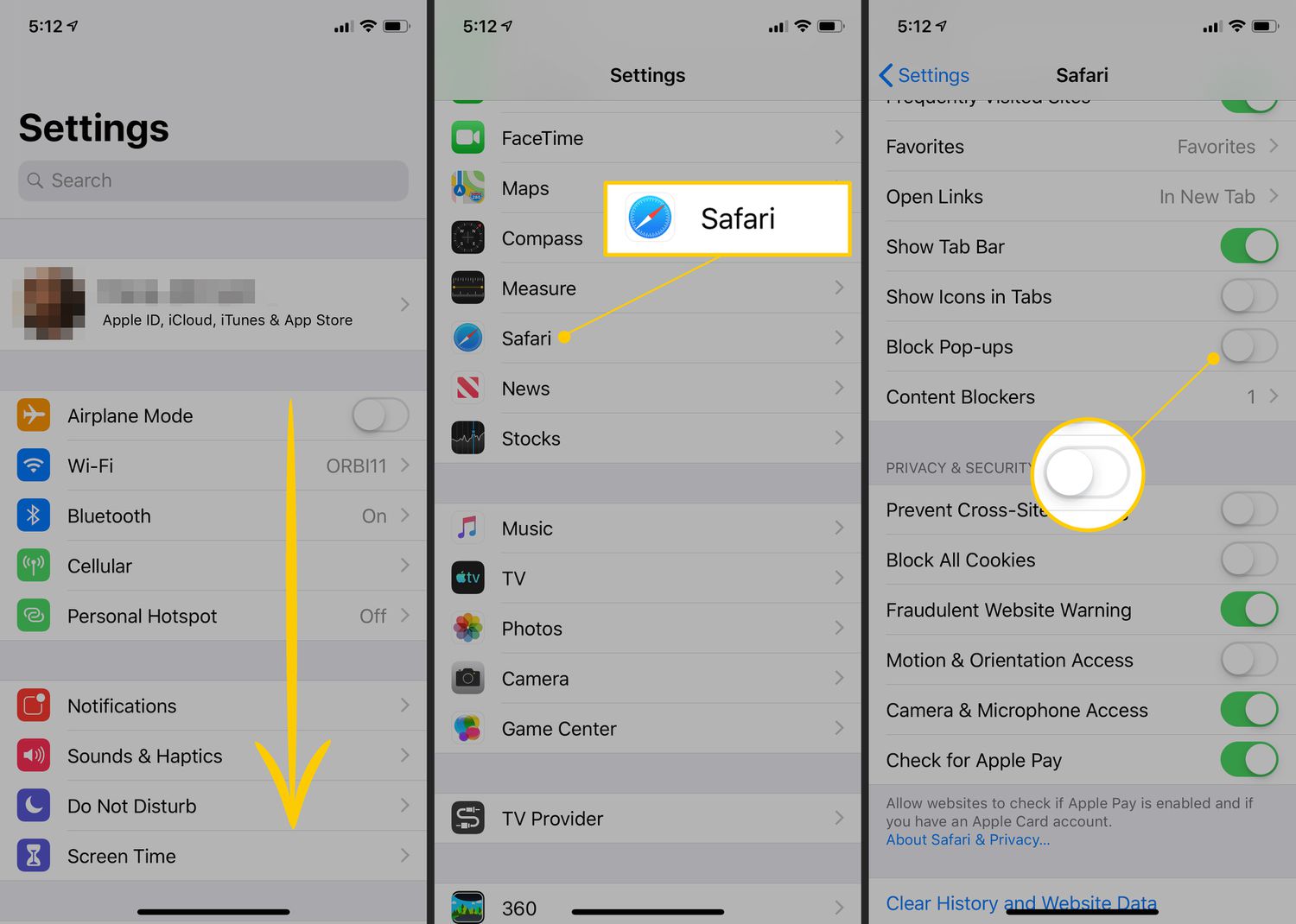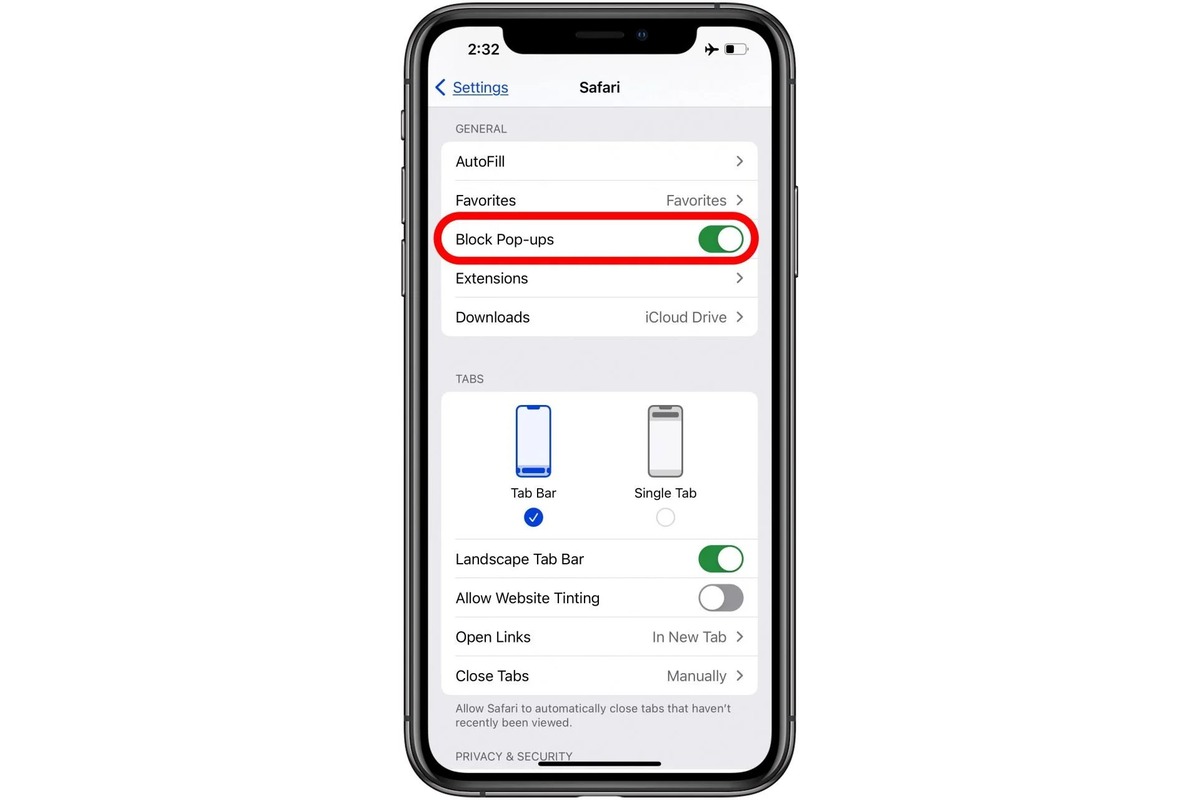Home>Health and Wellness>Get Ripped With Push-Ups Only!


Health and Wellness
Get Ripped With Push-Ups Only!
Published: January 24, 2024
Achieve your fitness goals with a push-up-only workout plan. Enhance your health and wellness with this effective and convenient exercise routine. Start your journey to a stronger, fitter you!
(Many of the links in this article redirect to a specific reviewed product. Your purchase of these products through affiliate links helps to generate commission for Noodls.com, at no extra cost. Learn more)
Table of Contents
Introduction
So, you want to get ripped, huh? You're looking to build muscle, get stronger, and achieve that chiseled physique that turns heads. Well, what if I told you that you can achieve all of that with just one simple exercise? Yes, that's right – push-ups!
Push-ups are a classic, no-frills exercise that have been around for ages, and for good reason. They are a powerful compound movement that engages multiple muscle groups, making them an incredibly effective exercise for building upper body strength and muscle mass. Whether you're a fitness newbie or a seasoned gym-goer, push-ups can be a game-changer in your quest for a sculpted physique.
In this article, we're going to delve into the world of push-ups and explore how this humble yet mighty exercise can help you achieve your fitness goals. We'll uncover the numerous benefits of push-ups, explore different variations to keep your workouts exciting and challenging, and even create a tailored push-up workout plan to maximize your gains. Additionally, we'll touch on the importance of nutrition in supporting muscle growth and share valuable tips to help you make the most of your push-up routine.
So, if you're ready to transform your body and take your fitness journey to the next level, buckle up and get ready to discover the incredible potential of push-ups. It's time to redefine your approach to strength training and unleash the full power of this simple yet transformative exercise. Let's dive in and uncover the secrets to getting ripped with push-ups!
Benefits of Push-Ups
-
Full-Body Workout: Push-ups are a compound exercise that engages multiple muscle groups simultaneously, including the chest, shoulders, triceps, and core. This means that with each rep, you are effectively working out various parts of your body, making push-ups a time-efficient choice for those looking to target multiple muscle groups in one go.
-
Strengthens Upper Body Muscles: The primary muscles targeted during push-ups are the pectoral (chest) muscles, the deltoids (shoulders), and the triceps. By regularly performing push-ups, you can effectively strengthen and tone these upper body muscles, leading to improved upper body strength and definition.
-
Core Stability: Push-ups require the engagement of the core muscles to maintain a straight body position throughout the movement. This not only helps in building a strong and stable core but also contributes to improved posture and overall balance.
-
No Equipment Necessary: One of the most significant advantages of push-ups is that they require no equipment. Whether you're at home, in a hotel room, or at the park, you can perform push-ups anytime, anywhere. This accessibility makes push-ups an incredibly convenient exercise for individuals with limited access to gym equipment.
-
Improves Functional Strength: As a functional exercise, push-ups mimic movements that are commonly performed in daily activities, such as pushing oneself up from a lying position. By regularly incorporating push-ups into your workout routine, you can enhance your overall functional strength, making everyday tasks easier to perform.
-
Enhances Cardiovascular Health: When performed in quick succession, push-ups can elevate your heart rate, providing a cardiovascular benefit in addition to strength training. This dual impact on both muscular and cardiovascular systems makes push-ups a versatile exercise for improving overall fitness.
-
Versatile and Scalable: Push-ups offer a high degree of versatility, allowing for various hand placements and modifications to target different muscle groups. Additionally, the intensity of push-ups can be easily adjusted by changing the angle, adding resistance, or incorporating plyometric variations, making them suitable for individuals of all fitness levels.
Incorporating push-ups into your fitness routine can yield a myriad of benefits, from sculpting a stronger and more defined upper body to enhancing overall functional strength and cardiovascular health. As we delve deeper into the world of push-ups, it becomes increasingly clear that this timeless exercise holds the key to unlocking a multitude of physical and fitness-related advantages.
Push-Up Variations
Push-up variations offer a diverse array of options to keep your workouts challenging, engaging, and effective. By incorporating different push-up variations into your routine, you can target specific muscle groups, add intensity, and break through plateaus to achieve remarkable results. Let's explore some popular push-up variations that can take your training to the next level:
-
Wide-Grip Push-Ups: This variation involves placing your hands wider than shoulder-width apart. Wide-grip push-ups primarily target the chest muscles, offering a greater range of motion and emphasizing the outer pectoral muscles. By incorporating wide-grip push-ups into your routine, you can effectively broaden and strengthen your chest while adding variety to your workout.
-
Diamond Push-Ups: Also known as close-grip push-ups, diamond push-ups involve forming a diamond shape with your hands by touching your thumbs and index fingers together beneath your chest. This variation places increased emphasis on the triceps while engaging the chest and shoulders. Diamond push-ups are an excellent choice for developing triceps strength and definition.
-
Decline Push-Ups: By elevating your feet on an elevated surface such as a bench or step, decline push-ups shift more of your body weight onto your upper chest, shoulders, and triceps. This variation intensifies the exercise, providing a greater challenge to these muscle groups and contributing to overall upper body strength and development.
-
Incline Push-Ups: In contrast to decline push-ups, incline push-ups involve placing your hands on an elevated surface, such as a bench or sturdy platform, while keeping your feet on the ground. This variation reduces the amount of body weight placed on the upper body, making it an excellent option for individuals seeking to gradually progress towards full push-ups or for those looking to target the lower chest and triceps.
-
Plyometric Push-Ups: Plyometric push-ups incorporate explosive movements to enhance power and explosiveness. This variation involves pushing off the ground with enough force to lift your hands off the ground, allowing you to develop upper body power while engaging fast-twitch muscle fibers. Plyometric push-ups are an advanced variation that can significantly elevate the intensity of your workouts.
-
One-Arm Push-Ups: One-arm push-ups are a challenging bodyweight exercise that demands exceptional strength and stability. This unilateral variation targets the chest, shoulders, triceps, and core while requiring heightened coordination and balance. While one-arm push-ups may be daunting for beginners, they offer a remarkable opportunity to develop overall upper body strength and stability.
-
Archer Push-Ups: Archer push-ups involve a dynamic movement where one arm extends out to the side while the other arm performs a standard push-up motion. This variation places a significant emphasis on the chest and shoulders while challenging stability and muscular control. Archer push-ups are an excellent choice for individuals seeking to enhance unilateral strength and coordination.
By incorporating a variety of push-up variations into your training regimen, you can effectively target different muscle groups, add intensity, and continually challenge your body to adapt and grow. Whether you're a beginner looking to build foundational strength or a seasoned fitness enthusiast seeking to break through plateaus, the diverse range of push-up variations offers something for everyone on the journey towards achieving a stronger, more sculpted physique.
Creating a Push-Up Workout Plan
Designing an effective push-up workout plan involves strategic considerations to optimize muscle engagement, progression, and overall fitness outcomes. Whether you're a beginner aiming to build foundational strength or an experienced fitness enthusiast seeking to elevate your training, a well-structured push-up workout plan can be a game-changer in achieving your fitness goals.
Setting Clear Goals
Before diving into your push-up routine, it's essential to establish clear fitness goals. Whether your objective is to increase muscle mass, enhance upper body strength, or improve muscular endurance, defining your goals will guide the structure and intensity of your workout plan. By aligning your push-up routine with specific objectives, you can tailor the exercises, repetitions, and variations to best support your desired outcomes.
Read more: How To Glow Up
Progressive Overload
Incorporating progressive overload is crucial for continual muscle growth and strength development. This principle involves gradually increasing the resistance or intensity of your workouts over time. For push-ups, progressive overload can be achieved by manipulating variables such as repetitions, sets, variations, and tempo. By progressively challenging your muscles, you stimulate growth and adaptation, leading to noticeable improvements in strength and muscle definition.
Structuring Your Push-Up Routine
A well-rounded push-up workout plan should encompass a variety of push-up variations to target different muscle groups and prevent plateauing. It's beneficial to include a mix of standard push-ups and variations such as wide-grip, diamond, decline, and plyometric push-ups to ensure comprehensive upper body engagement. Additionally, incorporating both traditional and modified push-up positions, such as incline and one-arm push-ups, can add diversity and challenge to your routine.
Repetitions and Sets
Determining the appropriate number of repetitions and sets is pivotal in optimizing the effectiveness of your push-up workout plan. For individuals aiming to build muscle mass and strength, a moderate to high number of repetitions (8-12) across multiple sets is recommended. On the other hand, if muscular endurance is the primary focus, higher repetitions with fewer sets can be incorporated. It's essential to find the right balance to align with your specific fitness goals and capabilities.
Rest and Recovery
Integrating adequate rest periods between sets and workouts is essential for optimal muscle recovery and growth. By allowing sufficient rest intervals, you enable your muscles to recuperate and adapt to the demands placed upon them during the push-up exercises. Balancing intensity with adequate recovery time is key to avoiding overtraining and promoting sustainable progress in your fitness journey.
Read more: Yanet Garcia’s OnlyFans Content Leaked!
Tracking Progress
Monitoring your progress and performance is integral to gauging the effectiveness of your push-up workout plan. Whether it's tracking the number of repetitions, increasing the difficulty of variations, or measuring improvements in strength and endurance, keeping a record of your achievements provides valuable insights into your advancement. This data can inform adjustments to your workout plan and serve as a source of motivation as you witness tangible progress over time.
Crafting a well-structured push-up workout plan tailored to your fitness goals, incorporating progressive overload, diverse variations, and strategic repetitions and sets, can propel you towards achieving remarkable results in strength, muscle development, and overall physical fitness. By leveraging the versatility and effectiveness of push-ups within a thoughtfully designed workout plan, you can unlock the full potential of this fundamental exercise and pave the way for a stronger, more sculpted physique.
Nutrition for Building Muscle
Proper nutrition plays a pivotal role in supporting muscle growth, strength development, and overall fitness progress. When aiming to build muscle through activities such as push-up workouts, it's essential to fuel your body with the nutrients it needs to optimize performance, recovery, and muscle synthesis.
Protein Intake
Protein serves as the cornerstone of muscle building, as it provides the essential amino acids necessary for muscle repair and growth. Incorporating high-quality protein sources such as lean meats, poultry, fish, eggs, dairy products, legumes, and plant-based protein sources into your diet is crucial for meeting your body's protein requirements. For individuals engaged in strength training, aiming for a consistent intake of protein throughout the day can support muscle protein synthesis and aid in post-exercise recovery.
Carbohydrates for Energy
Carbohydrates serve as the primary fuel source for physical activity, including intense workouts such as push-up sessions. Opting for complex carbohydrates such as whole grains, fruits, vegetables, and legumes provides sustained energy levels, supporting performance during workouts and aiding in glycogen replenishment post-exercise. Balancing carbohydrate intake with the demands of your training regimen can help sustain energy levels and optimize muscle function.
Read more: The Mysterious Shadows Only I Can See
Healthy Fats
Incorporating healthy fats into your diet is essential for supporting overall health and optimizing nutrient absorption. Sources of healthy fats, including avocados, nuts, seeds, and olive oil, offer essential fatty acids that contribute to cellular function, hormone production, and inflammation regulation. Additionally, healthy fats play a role in supporting muscle recovery and promoting long-term health and fitness.
Hydration
Proper hydration is often overlooked but is crucial for supporting muscle function, recovery, and overall performance. Adequate water intake is essential for maintaining optimal hydration levels, aiding in nutrient transport, and facilitating metabolic processes related to muscle repair and growth. Staying well-hydrated before, during, and after workouts is vital for promoting muscle function and supporting overall physical well-being.
Micronutrient Support
In addition to macronutrients, ensuring adequate intake of micronutrients such as vitamins and minerals is vital for overall health and muscle function. Nutrient-dense foods such as leafy greens, colorful vegetables, and fruits provide a spectrum of vitamins and minerals that contribute to immune function, energy metabolism, and muscle recovery. Incorporating a diverse range of nutrient-rich foods into your diet supports overall health and aids in the optimization of muscle-building processes.
By prioritizing a well-rounded and nutrient-dense diet that encompasses a balance of protein, carbohydrates, healthy fats, hydration, and essential micronutrients, you can provide your body with the necessary tools to support muscle growth, strength development, and overall fitness progress. Nourishing your body with the right nutrients not only complements your physical training efforts but also contributes to long-term health and well-being, laying a solid foundation for achieving your muscle-building goals.
Tips for Getting Ripped with Push-Ups
-
Consistency is Key: To achieve significant results with push-ups, consistency is paramount. Incorporate push-up sessions into your weekly routine and strive for regularity in your workouts. Consistent training allows your muscles to adapt and grow, ultimately contributing to a more defined and sculpted physique.
-
Progress Gradually: Whether you're aiming to increase the number of repetitions, incorporate challenging variations, or enhance overall strength, gradual progression is crucial. Push your limits sensibly, gradually increasing the intensity and difficulty of your push-up workouts to stimulate continuous muscle growth and development.
-
Focus on Form: Proper form is essential for maximizing the effectiveness of push-ups and minimizing the risk of injury. Ensure your body maintains a straight line from head to heels, engage your core, and lower yourself until your chest nearly touches the ground. Emphasizing correct form ensures optimal muscle engagement and reduces the likelihood of strain or discomfort.
-
Mind-Muscle Connection: During each push-up, focus on the specific muscles being engaged. Visualize the targeted muscle groups working throughout the movement, fostering a strong mind-muscle connection. This heightened awareness can enhance muscle activation and contribute to more effective workouts.
-
Incorporate Recovery Days: Integrate adequate rest and recovery days into your training schedule to allow your muscles to repair and grow. Overtraining can impede progress and increase the risk of injury, so be mindful of balancing intense workouts with sufficient recovery time.
-
Combine with Cardiovascular Exercise: Pairing push-ups with cardiovascular activities such as running, cycling, or high-intensity interval training can further enhance overall fitness and calorie expenditure. This combination supports lean muscle development while promoting cardiovascular health and endurance.
-
Optimize Nutrition: Fuel your body with a balanced diet rich in lean proteins, complex carbohydrates, healthy fats, and essential nutrients. Proper nutrition supports muscle recovery, energy levels, and overall physical performance, complementing the impact of your push-up workouts.
-
Set Realistic Goals: Establish achievable and realistic fitness goals that align with your individual capabilities and aspirations. By setting specific targets for strength, muscle definition, or endurance, you can tailor your push-up routine to effectively work towards these objectives.
-
Seek Variety: Introducing variety into your push-up routine can prevent monotony and stimulate continuous progress. Experiment with different push-up variations, training techniques, and workout structures to keep your training engaging and challenging.
-
Listen to Your Body: Pay attention to your body's signals and adjust your training intensity and frequency accordingly. Being attuned to your body's responses allows for adjustments that support sustainable progress and minimize the risk of overexertion.
By implementing these tips, you can optimize your push-up workouts, propel your fitness journey forward, and work towards achieving a ripped and well-defined physique solely through the power of this fundamental yet highly effective exercise.












